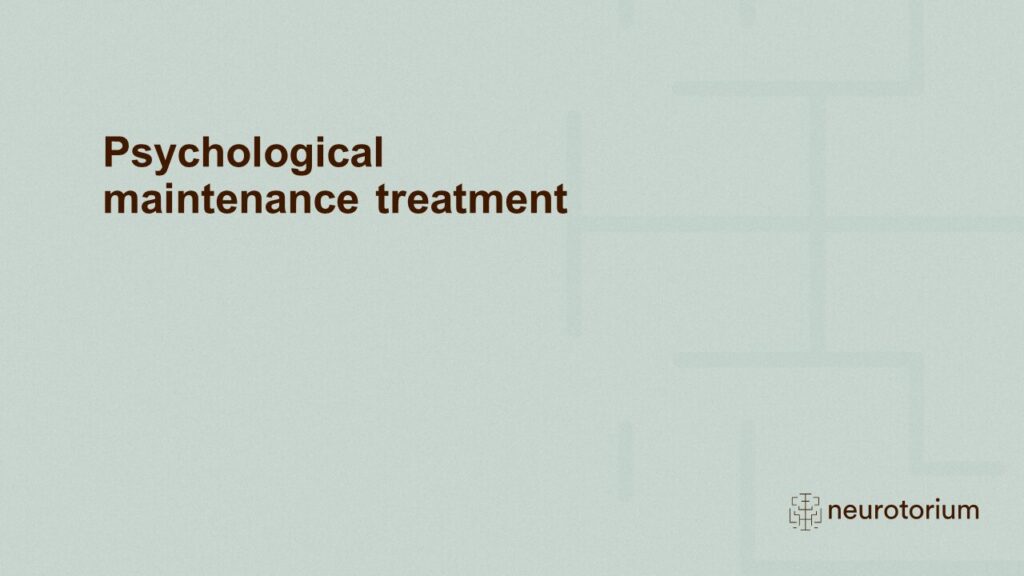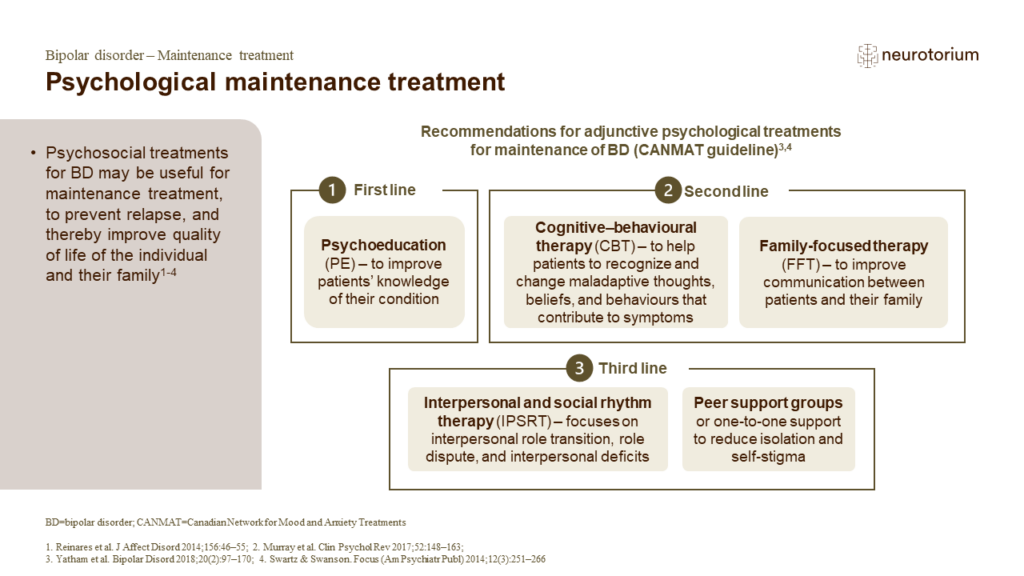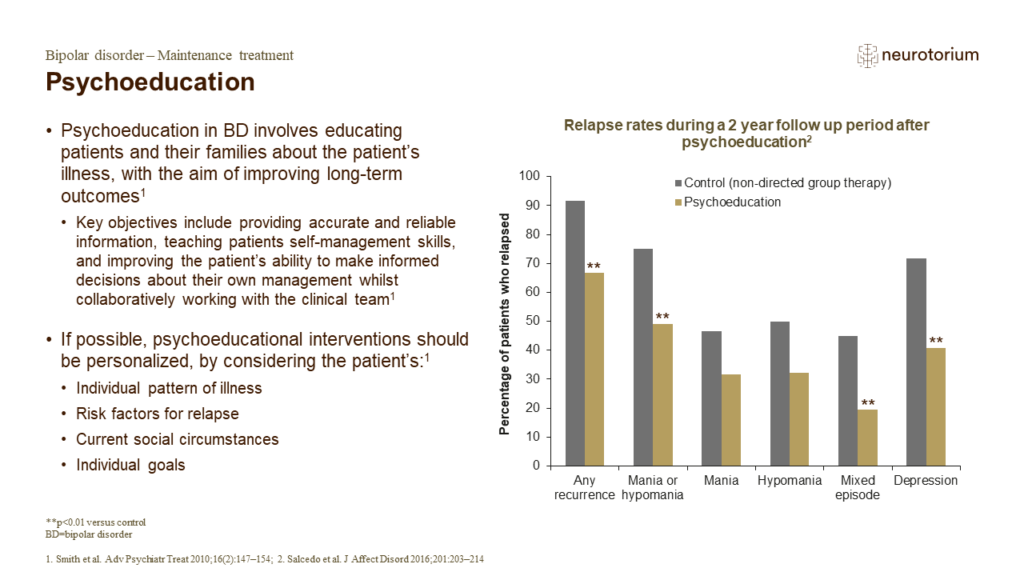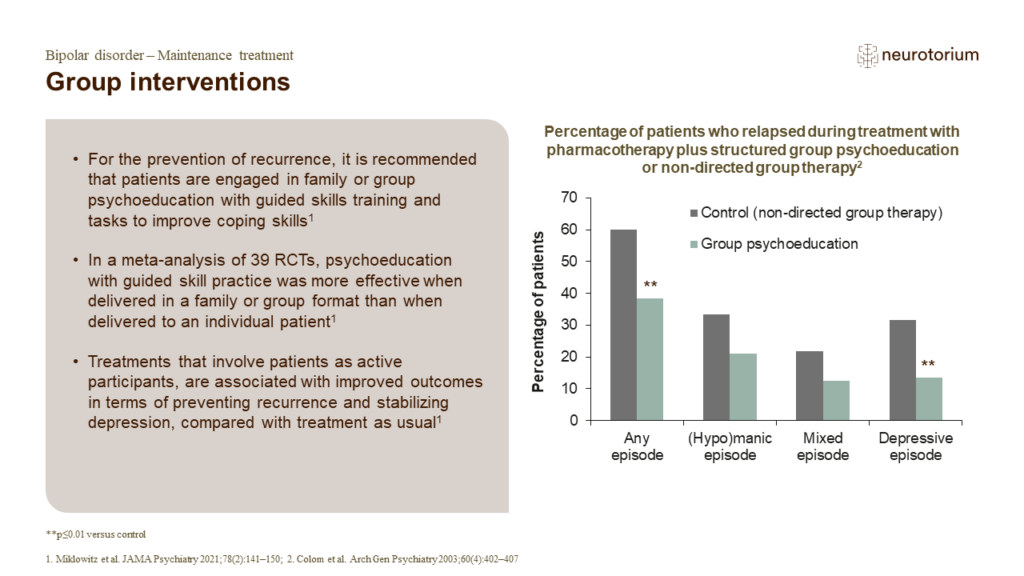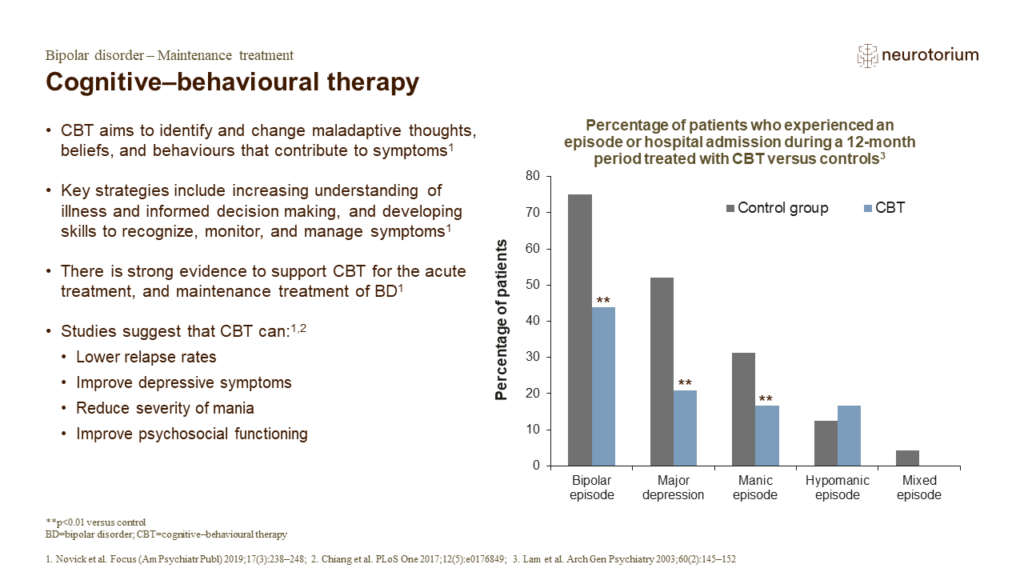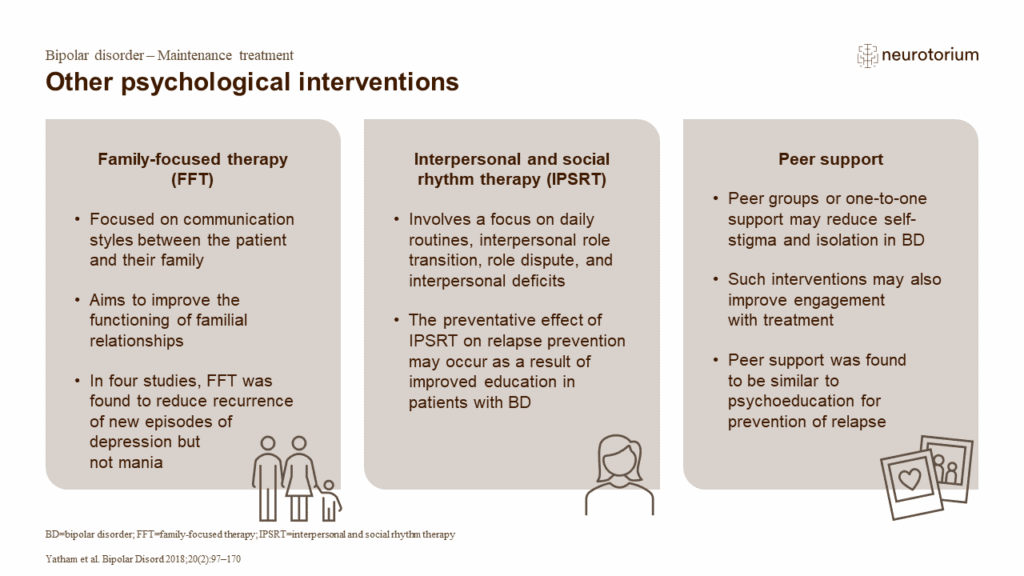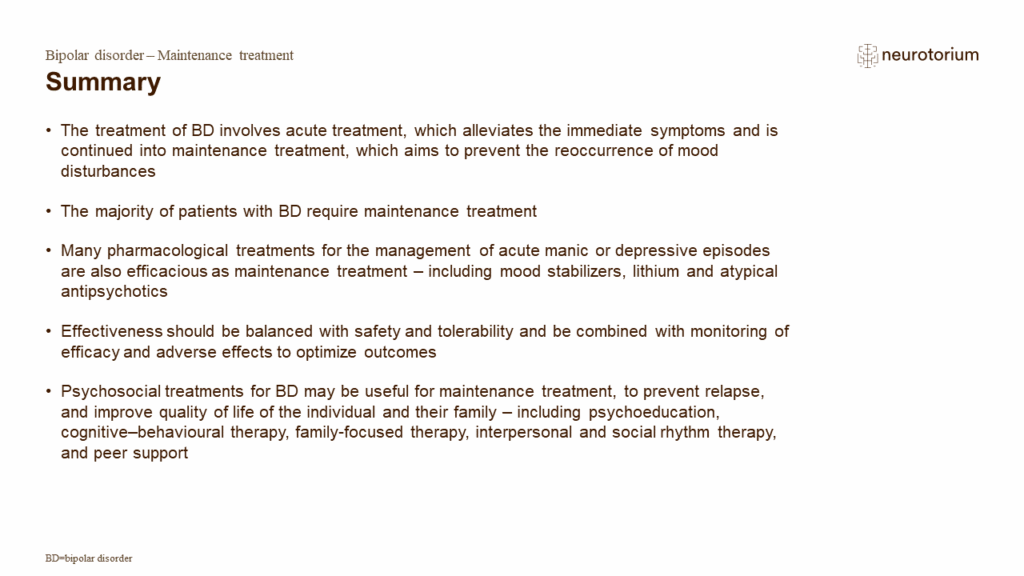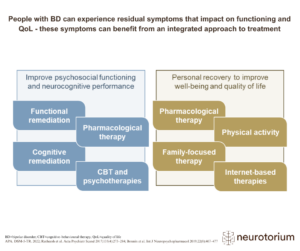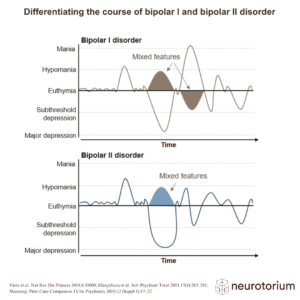Index for
slide deck
Maintenance treatment

Maintenance treatment
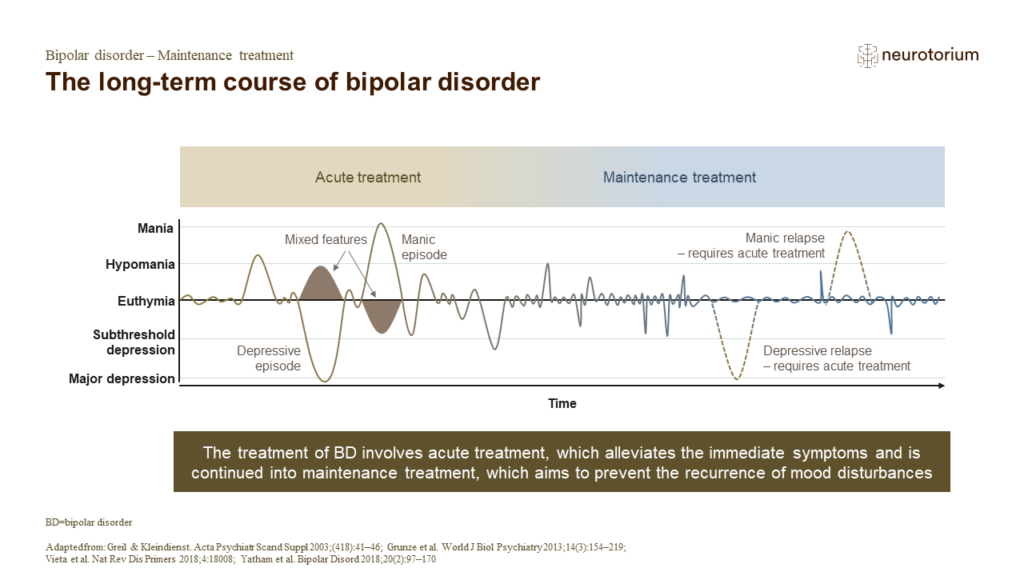
The long-term course of bipolar disorder
Some studies have attempted to better understand the longitudinal course of bipolar disorder. Two such prospective, longitudinal studies investigated the symptomatic status of patients with bipolar I disorder,5 and bipolar II disorder.6 Evidence showed that bipolar I and …
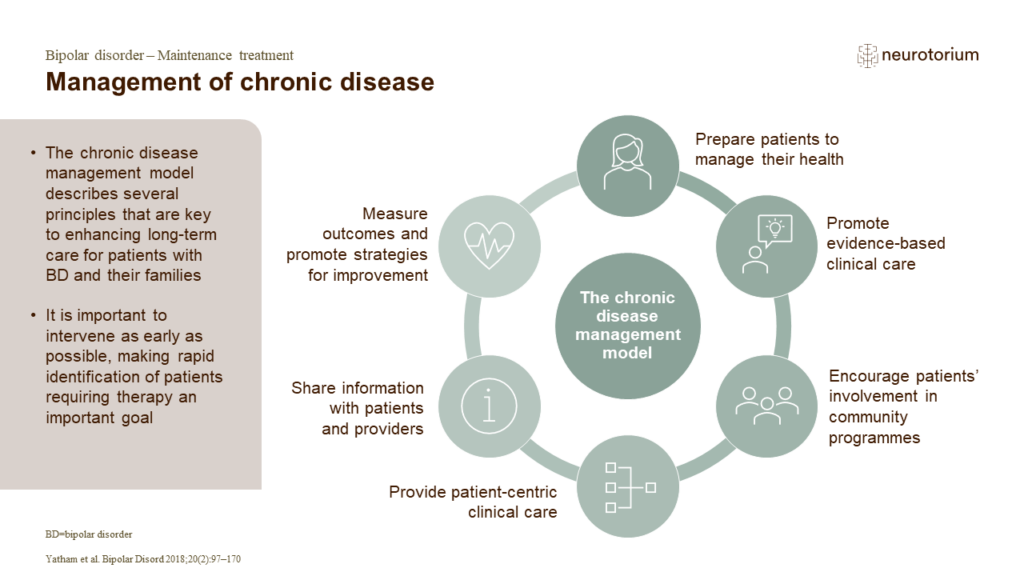
Management of chronic disease
The management of bipolar disorder requires a long-term, multidisciplinary approach, due to its chronic, relapsing and remitting nature.1 Following basic clinical management of the acute condition, which involves attention to diagnosis, comorbidities, and medical health, …
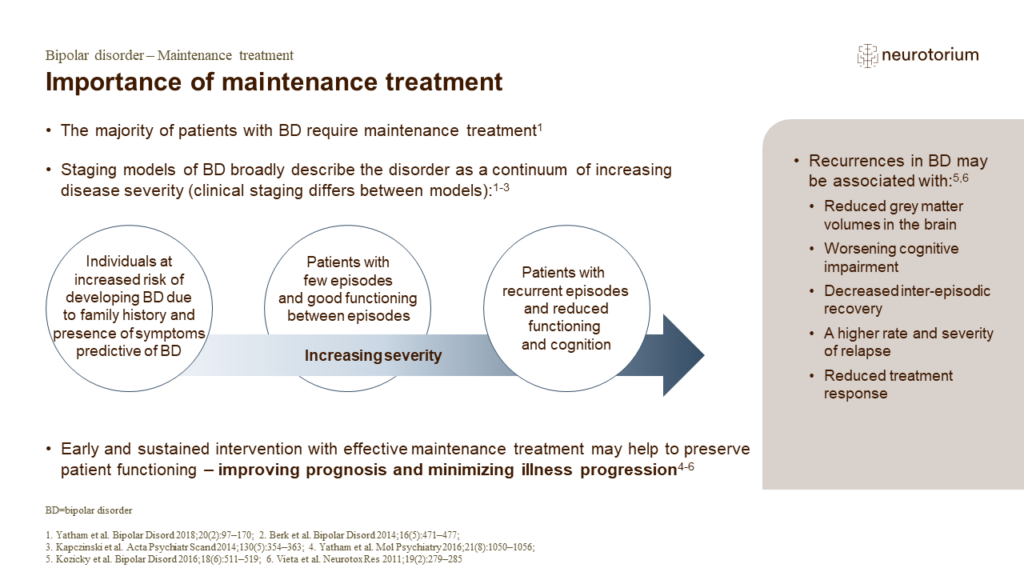
Importance of maintenance treatment
Staging models for bipolar disorder can help to improve understanding of the illness trajectory and mechanisms underlying the progression of disease.4,6 Increased knowledge of the disease course, as a result, may improve treatment planning and prognosis.6
References:
1. Y…

Risk of recurrence and relapse
Traditionally, the term ‘recurrence’ has been used to refer to symptoms that re-emerge after the point of remission, whereas ‘relapse’ is used to refer to the re-emergence of symptoms in the index episode.3 A systematic review of long-term, naturalistic studies of treated…
Pharmacological maintenance treatment
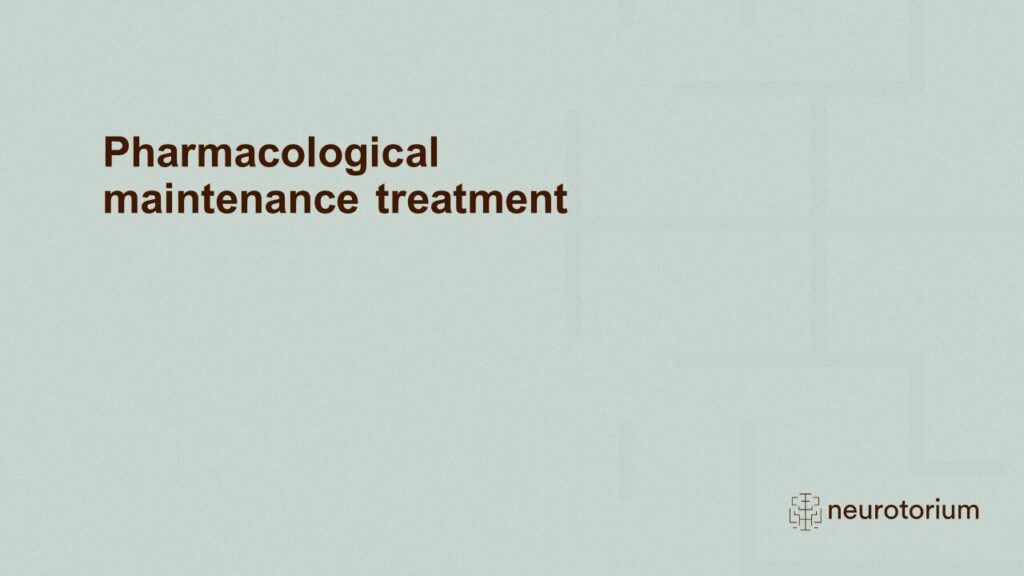
Pharmacological maintenance treatment
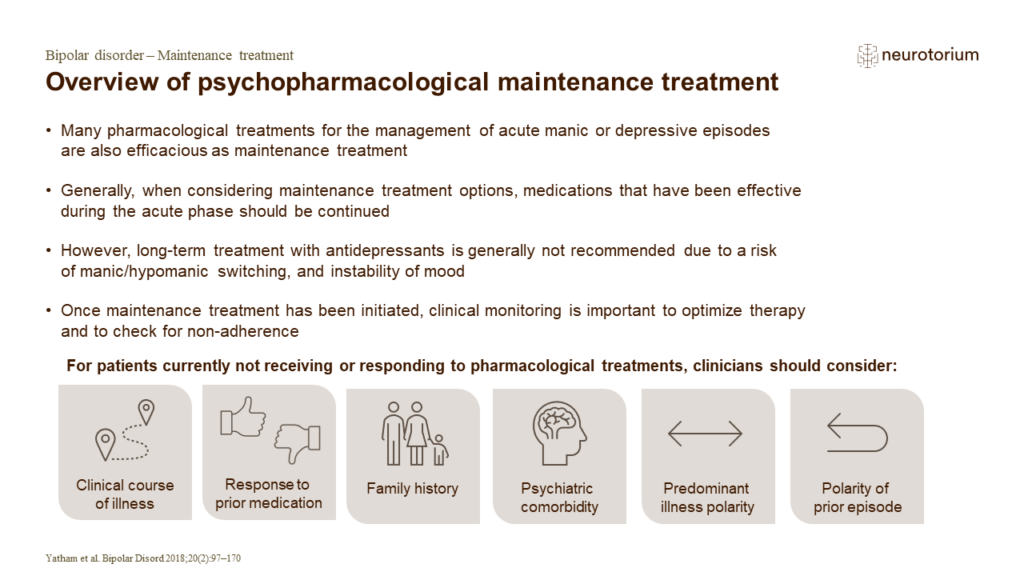
Overview of psychopharmacological maintenance treatment
There are many different pharmacotherapies that are used to treat bipolar disorder, including lithium, mood stabilizers, and antipsychotics.1 Generally, the treatment approach to bipolar I disorder is similar to bipolar II disorder, as there are few studies that have inve…
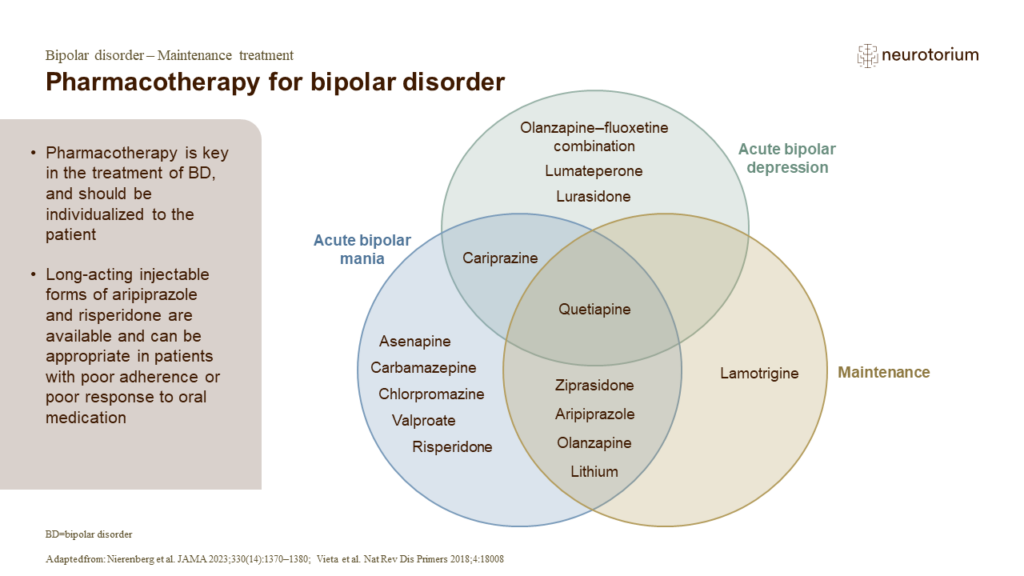
Pharmacotherapy for bipolar disorder
There are many different pharmacotherapies that are used to treat bipolar disorder, including lithium, mood stabilizers, and antipsychotics.1 Generally, the treatment approach to bipolar I disorder is similar to bipolar II disorder, as there are few studies that have inve…
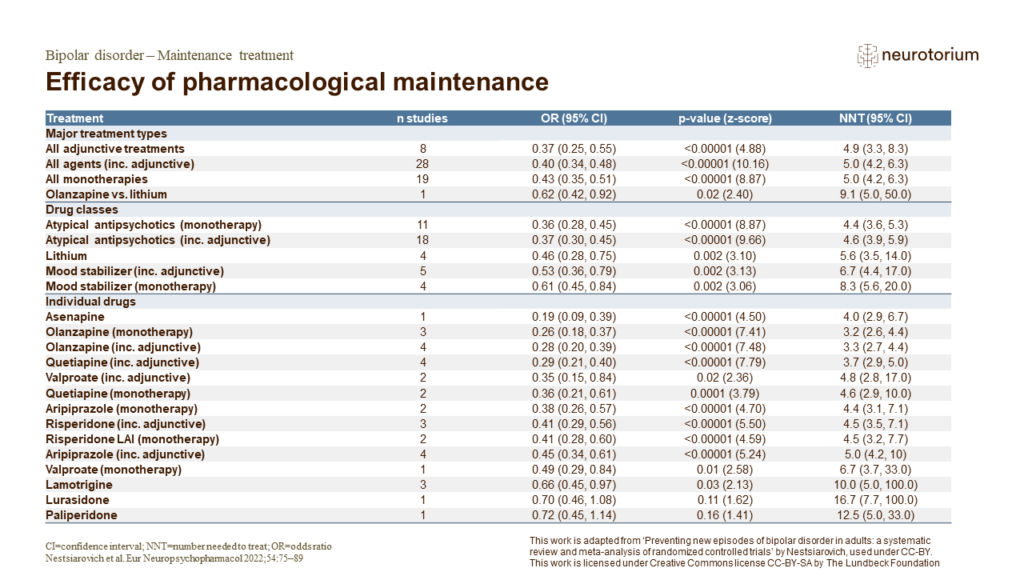
Efficacy of pharmacological maintenance
In a meta-analysis of randomized, controlled trials of maintenance pharmacotherapy in bipolar disorder, asenapine, olanzapine, and quetiapine showed the highest efficacy over placebo in preventing any type of new episode.1 Among the classes of drugs investigated, the risk…
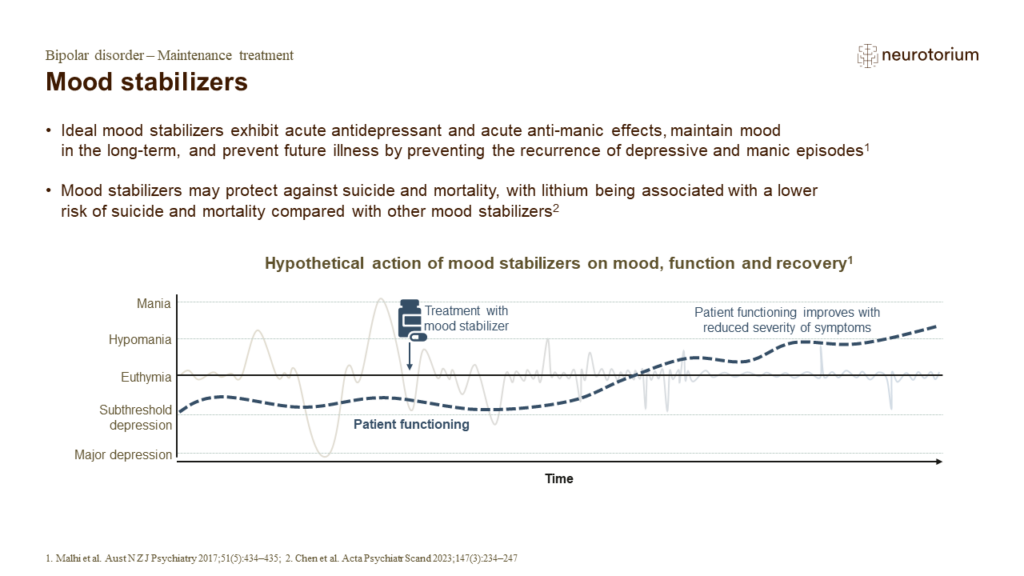
Mood stabilizers
Lithium is an established treatment for bipolar disorder, and is included in most treatment guidelines because of its availability and its effectiveness.3 Although, compared with its effects on manic symptoms, it seems to be less effective in treating depressive symptoms.…
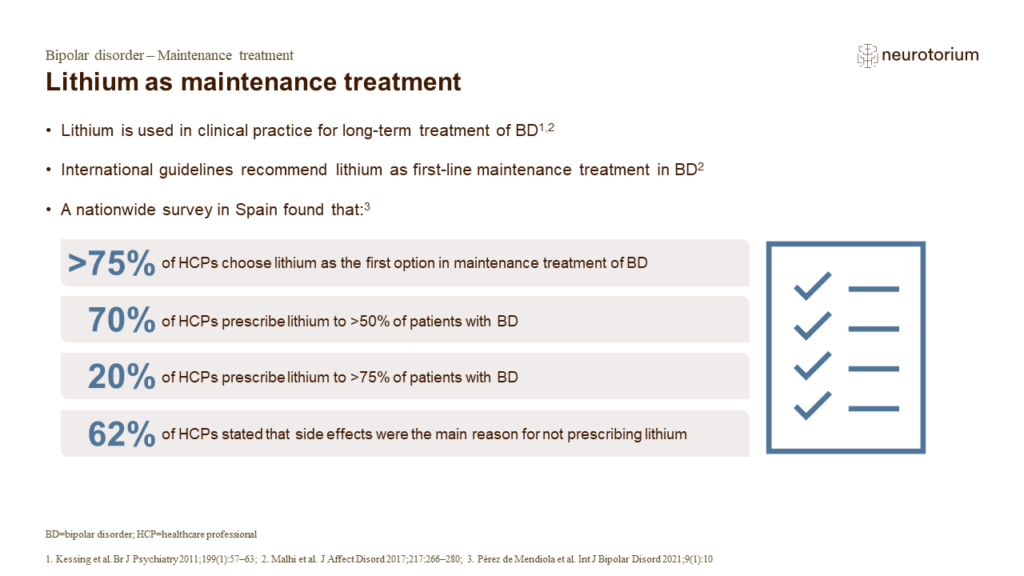
Lithium as maintenance treatment
As lithium has a low therapeutic index, the dose should be adjusted to a target level in order to optimize treatment.<sup>4,5</sup> This target level will often be near the threshold required to produce harmful effects, and so serum levels should be frequently monitored d…
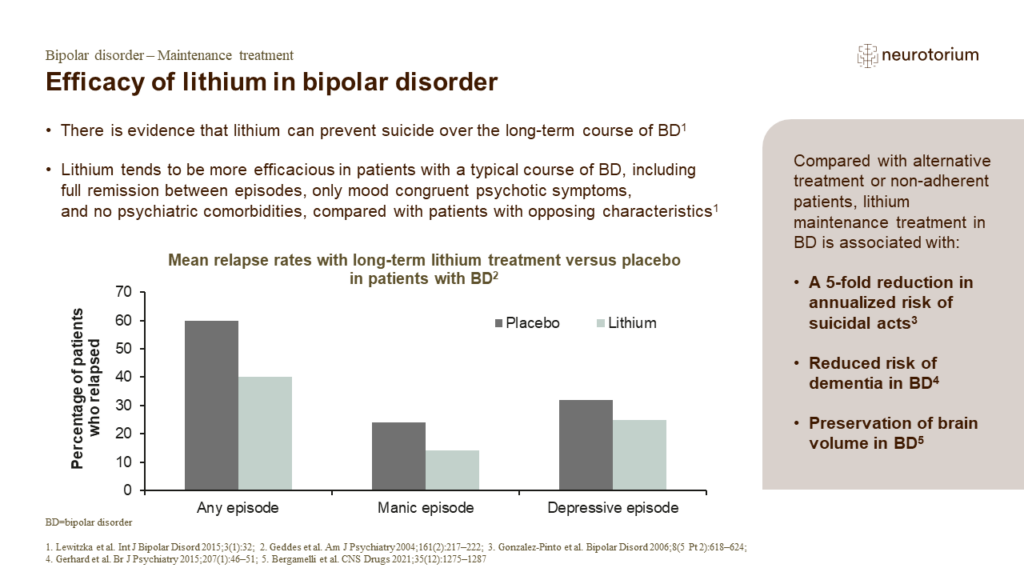
Efficacy of lithium in bipolar disorder
Two hypotheses about lithium’s protective effects in relation to suicide have been suggested.1 One suggests that because lithium is a mood stabilizer, patients with a good response to lithium have fewer, less severe, and/or less frequent affective episodes, which in turn …
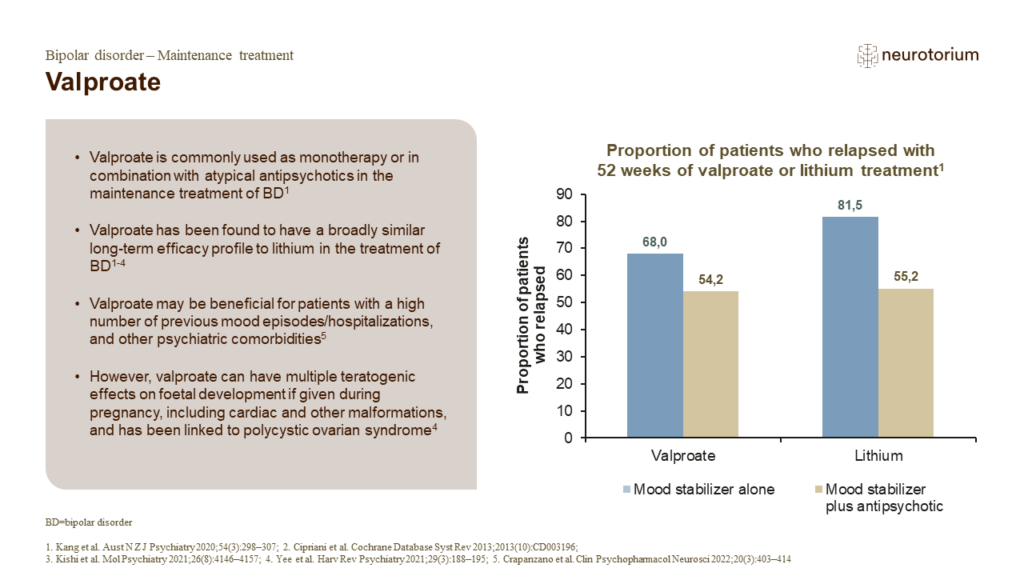
Valproate
In three meta-analyses of 6, 41, and 21 studies, very few differences were found between lithium and valproate for long-term efficacy in patients with bipolar disorder.2-4 However, evidence from a post hoc analysis of two randomized controlled trials showed that valproate…
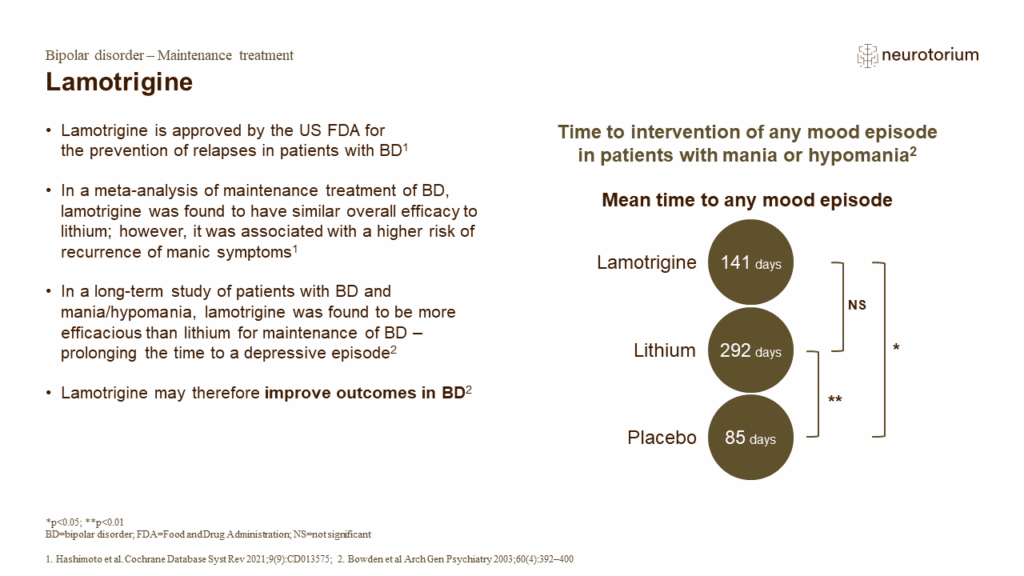
Lamotrigine
Compared with other pharmacotherapies for bipolar disorder, lamotrigine shows benefit in terms of its effects on weight gain (specifically, a lack of adverse weight gain), and cognition, with evidence suggesting that lamotrigine may improve cognitive functioning.3 However…
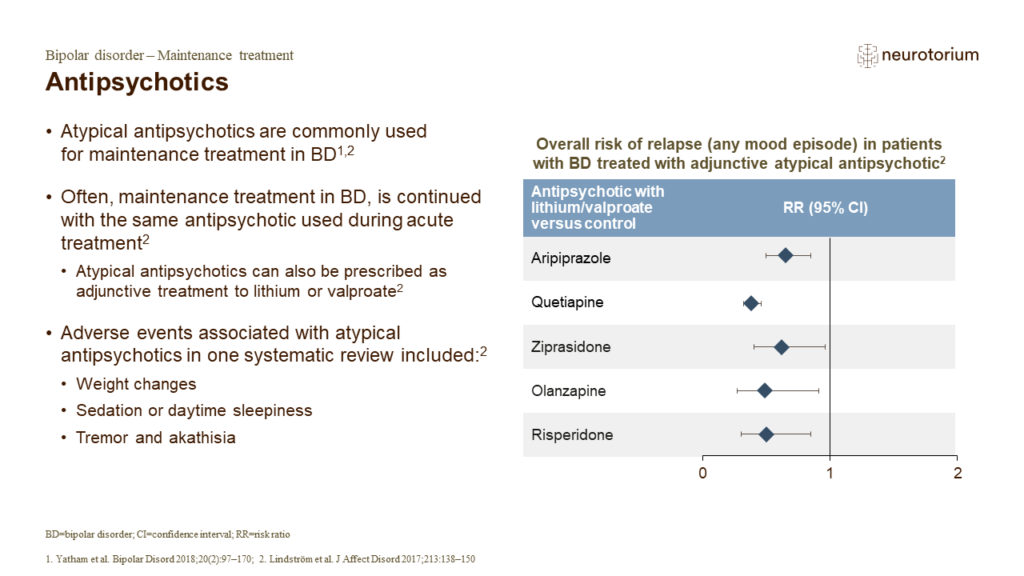
Antipsychotics
Evidence from the meta-analysis shown on the slide of the efficacy of atypical antipsychotics versus control (variously placebo, lithium, valproate, or lamotrigine), in patients with bipolar disorder, showed that adjunctive therapy with quetiapine was the only treatment t…
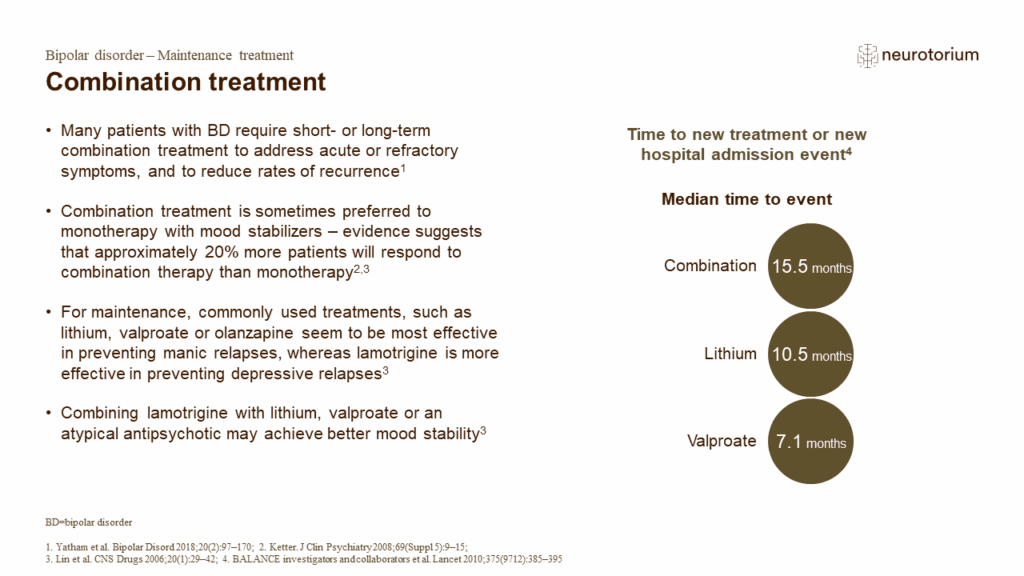
Combination treatment
Results of the BALANCE study showed that for patients with bipolar I disorder on long-term therapy, both combination therapy with lithium plus valproate combination therapy was more likely to prevent relapse than valproate monotherapy.4 This benefit was irrespective of ba…
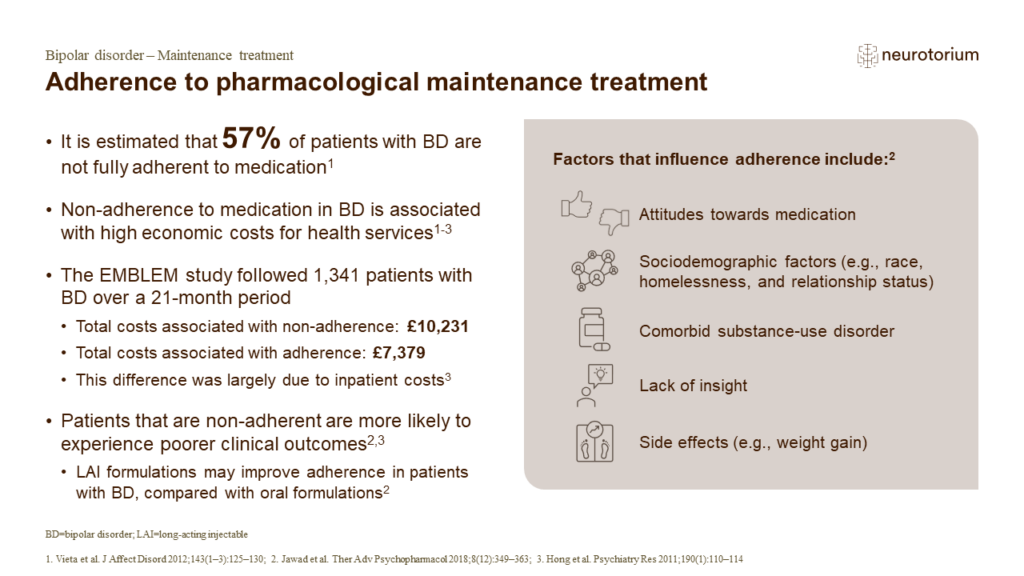
Adherence to pharmacological maintenance treatment
Because the reasons for non-adherence vary between patients, medication adherence should be addressed on an individual patient basis.2 However, clinicians can adopt behaviours that may improve adherence in patients, such as ensuring the patient is educated about their ill…
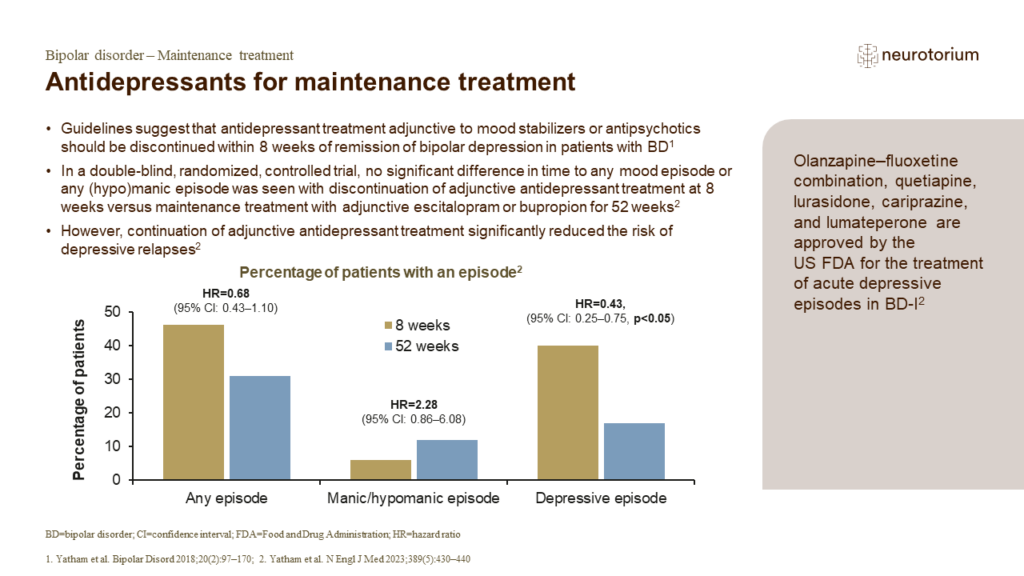
Antidepressants for maintenance treatment
Long-term treatment of bipolar disorder with antidepressants is not recommended, due to a risk of manic/hypomanic switching.1
References:
1. Yatham LN, Kennedy SH, Parikh SV, et al. Canadian Network for Mood and Anxiety Treatments (CANMAT) and International Society for Bi…
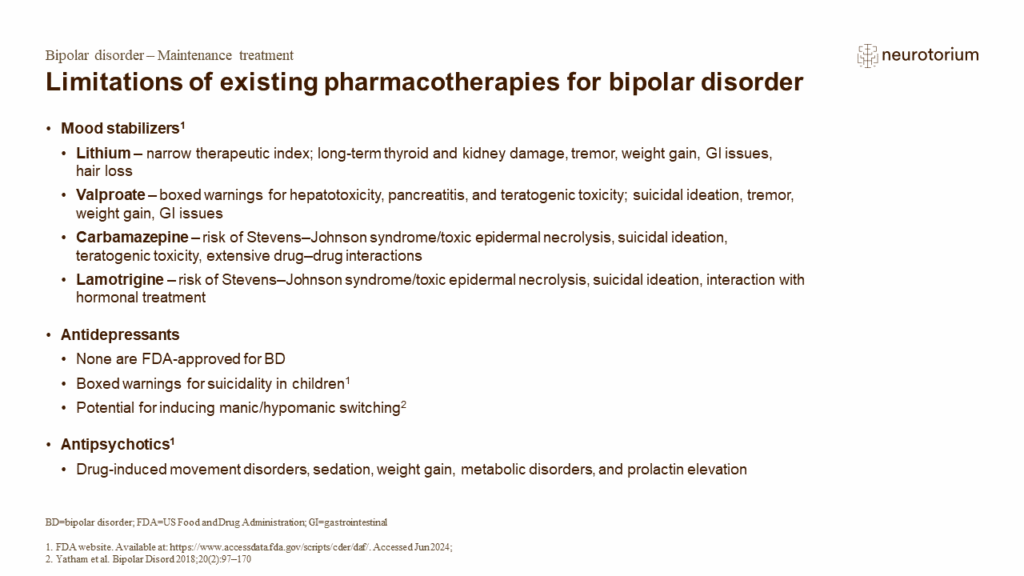
Limitations of existing pharmacotherapies for bipolar disorder
Some of the limitations of existing pharmacotherapies for bipolar disorder are discussed on the slide.
References:
1. FDA website. Available at: https://www.accessdata.fda.gov/scripts/cder/daf/. Accessed Jun 2014.
2. Yatham LN, Kennedy SH, Parikh SV, et al. Canadian Netwo…
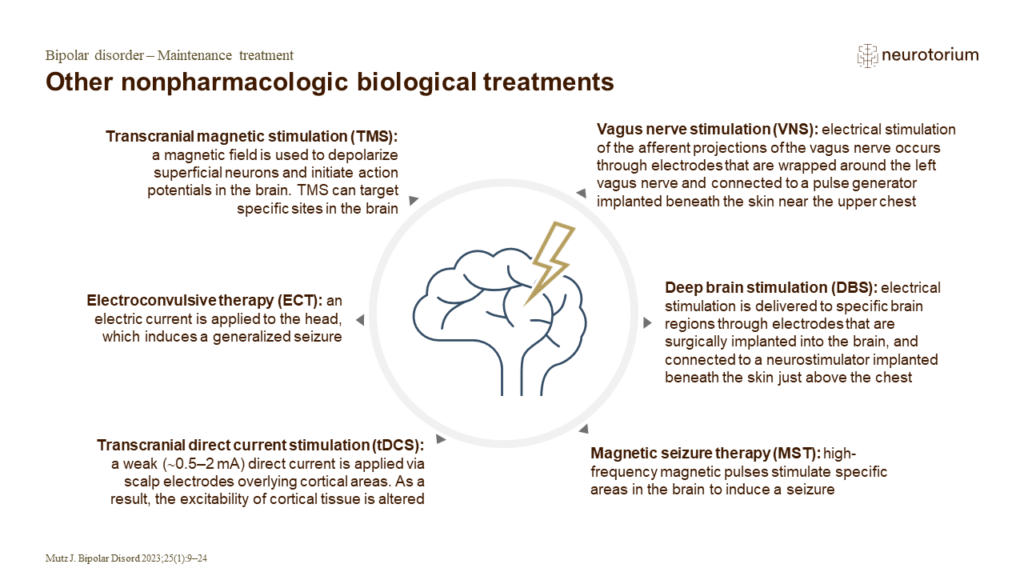
Other nonpharmacologic biological treatments
There is increasing interest in brain stimulation techniques, as an add-on or as an alternative to existing treatments for bipolar disorder.1 There are various such techniques, as outlined on the slide.1 However, currently the evidence regarding the use of such treatments…
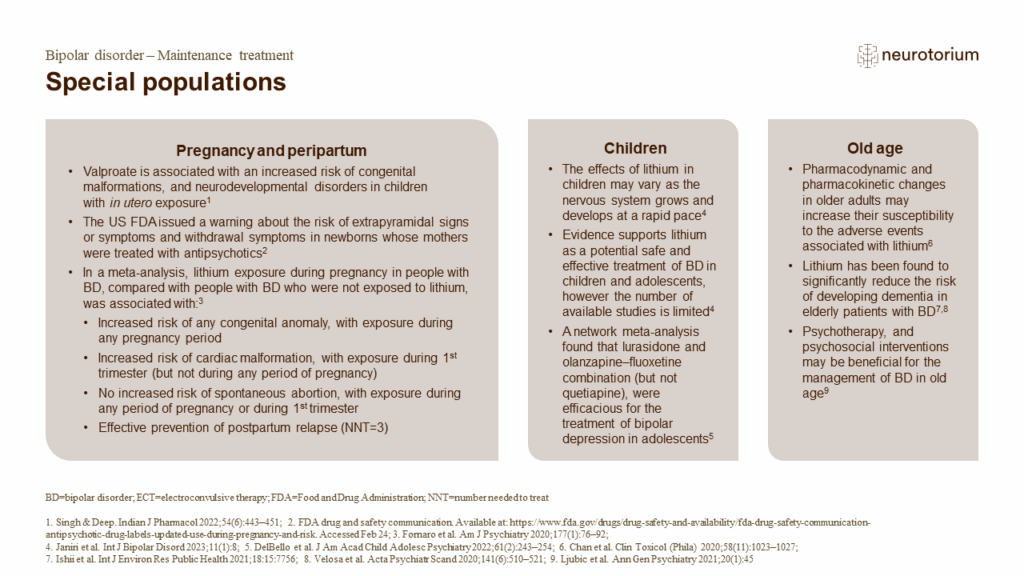
Special populations
When considering pharmacological management of mood disorders, the peripartum period, childhood, and old age, should be considered as special clinical conditions that deviate from the normal distribution of patient characteristics.4 In pregnancy, weighing any risks to the…


